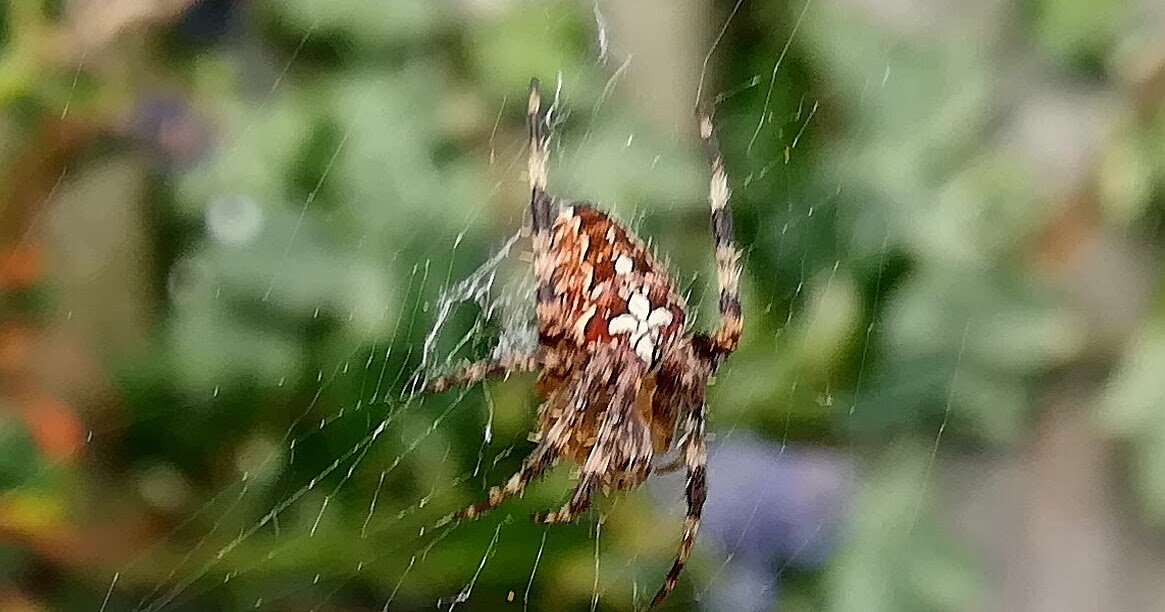If you live in Europe or North America, you may have encountered a fascinating spider with a unique marking on its abdomen – a fleur de lis pattern resembling a heraldic cross. This distinctive spider is known as the Cross Orbweaver or European Garden Spider with the scientific name Araneus diadematus.
Identifying the Cross Orbweaver
The Cross Orbweaver is a common orb-weaving spider found throughout many temperate regions. It spins large, circular webs in gardens, fields, and forests to catch flying insect prey.
Here are the key identifying features of this spider:
-
Size: Females range from 0.26 to 0.79 inches long while males are a bit smaller at 0.22 to 0.51 inches in length.
-
Color: Variable background color from pale yellow to dark gray.
-
Abdomen: Has distinctive white markings forming a cross or fleur de lis shape. The markings are made of guanine crystals.
-
Legs: Long, with specialized claws for clinging to web strands.
-
Webs: Builds large, circular orb webs up to 2 feet across. Often builds the web near foliage.
The fleur de lis pattern on the spider’s abdomen is unmistakable. The shape resembles a heraldic cross or the stylized lily symbol associated with French royalty.
Web-Spinning Strategies
The female Cross Orbweaver is the web architect, diligently spinning the large circular nets. The webs have concentric circles of sticky silk surrounded by supporting strands.
To capture prey, the spider waits head-down in the center of the web and senses vibrations from insects entangled in the sticky silk. It rapidly wraps prey in more silk before consuming it. The web also serves as a daytime retreat for the reclusive spider.
If disturbed in its web, the Cross Orbweaver vibrates rapidly to startle potential predators. This blurring behavior may help it appear larger and more threatening.
Habits and Habitat
Cross Orbweavers are most noticeable in late summer and fall when mature females build their trademark webs. The species overwinters as juveniles or eggs before maturing in spring.
In urban areas, these spiders frequently spin their webs on porches, gardens, and building eaves. Rural populations thrive in fields, meadows, and forest clearings.
Though the Cross Orbweaver rarely bites humans, females may become defensive if their web is disturbed. Their venom is considered harmless to people.
A Familiar Backyard Spider
With its striking appearance, formidable web, and comfort with human habitats, the Cross Orbweaver is a familiar backyard spider for many homeowners. Seeing one of these fascinating creatures spinning an intricate web or waiting patiently for flying insects can inspire appreciation for the beauty and adaptability of spiders.
So next time you come across a spider with a perfect fleur de lis pattern on its abdomen, take a moment to admire the artistry of the Cross Orbweaver. Just allow it to remain peacefully in its web and marvel at this harmless hunter going about its business.
Red Back Spider | Attenborough: Life in the Undergrowth | BBC Earth
FAQ
Is the silver Garden Spider poisonous?
Are spiny backed orb-weavers poisonous?
Is a Johnson jumping spider poisonous?
Are spiders with white cross on back poisonous?
- The Ultimate Guide to Growing Strawberries in Raised Beds - August 8, 2025
- No-Dig Garden Beds: The Easiest Way to Grow a Beautiful Garden - August 6, 2025
- How to Protect and Preserve Wood for Raised Garden Beds - August 6, 2025

